 |
|
EG And |
| Type |
S |
| Eruptions |
Stable |
| Type Géante |
M3 |
| Mag Range |
7 - 7.5 |
| |
|
A rather bright symbiotic, showing Ha shape and intensity variations with phase. A good target for high resoluttion spectroscopy.
|
 |
|
AX Per |
| Type |
S |
| Eruptions |
Z And (3 mags range) |
| Type Géante |
M3III |
| Mag Range |
10.5 - 12.5 |
| Outburst mag |
8.7 (1978, 1988-89) |
A classical high excitation symbiotic
( note intense[FeVII] lines ) |
 |
|
o Ceti ("Mira") |
| Type |
D |
| Eruptions |
- |
| Type Géante |
Mira M2-M7 |
| Mag Range |
2 - 10 (mira pulse) |
| |
|
The "wonderful" is also classified as a symbiotic in Belczinski catalog (Emission lines in UV spectrum). The dense companion was only recently discovered as a white dwarf. In visible range, the spectrum variaibility closely looks like a classic mira. |
| |
|
BD Cam |
 |
|
UV Aur |
| Type |
D |
| Eruptions |
Stable |
| Type Géante |
Mira C8 |
| Mag Range |
7.5 - 11 |
| |
|
The giant produces a typical carbon mira spectrum ; the periodic luminosity variation is produced by mira pulsation
|
 |
|
V1261 Ori |
| Type |
|
| Eruptions |
Stable |
| Type Géante |
S4.1 - M3 |
| Mag Range |
6.7 - 7.20 |
| |
|
The cool component is a S type giant. Emission lines in UV (77 eV) |
 |
|
SS Lep * |
| Type |
|
| Eruptions |
|
| Type Géante |
|
| Mag |
4.9 |
| |
|
SS Lep is classified symbiotic in numerous data base such as Simbad, AAVSO or GCVS, but doesn't appear in any of the 3 symbiotics catalog.
This binary, recently resolved, shows however a noteworthy spectrum. A bright star for high resolution spectroscopy. |
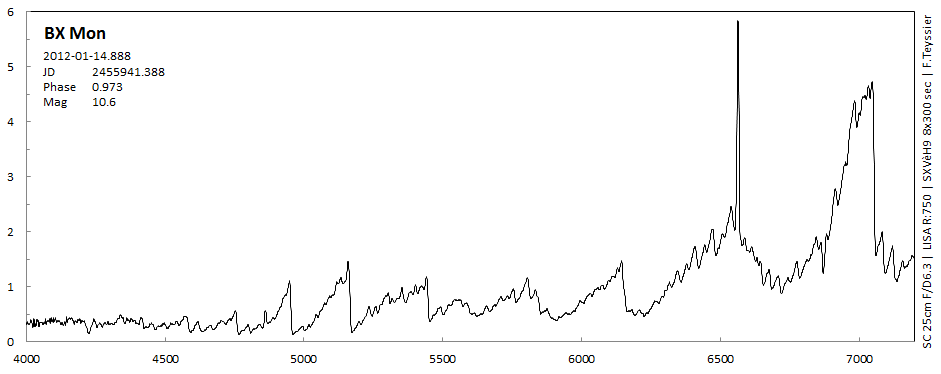 |
|
BX Mon |
| Type |
S |
| Eruptions |
Stable |
| Type Géante |
M4.5 III |
| Mag Range |
9.3 - 13 |
| |
|
A typical symbiotic star with strong Balmer emission lines and weak He lines.
Numerous outbursts (2.5 mag amplitude). Currently near mag 10.
|
 |
|
V694 Mon |
| Type |
S |
| Eruptions |
Eruption permanente |
| Type Géante |
M6 |
| Mag Range |
9 -11.5 |
| |
|
One of the more extrem star our the galaxy. This "exotic star" shows significant absorption compenents in the blue edge og the balmer lines. During outburst, the maximum velocity reaches 7000 km/sec ! They are formed in a jet pointing in our direction (like a blazar)
|
 |
|
NQ Gem * |
| Type |
D (Mira C) |
| Eruptions |
Calme |
| Type Géante |
C6.2 |
| Mag Range |
7.5 - 8.5 |
| |
|
* Suspected symbiotic star
Luminosity almost stable. Like EG And or UV Aur, the binary nature of NQ Gem only appears in the UV spectrum. However, nice carbon spectrum. |
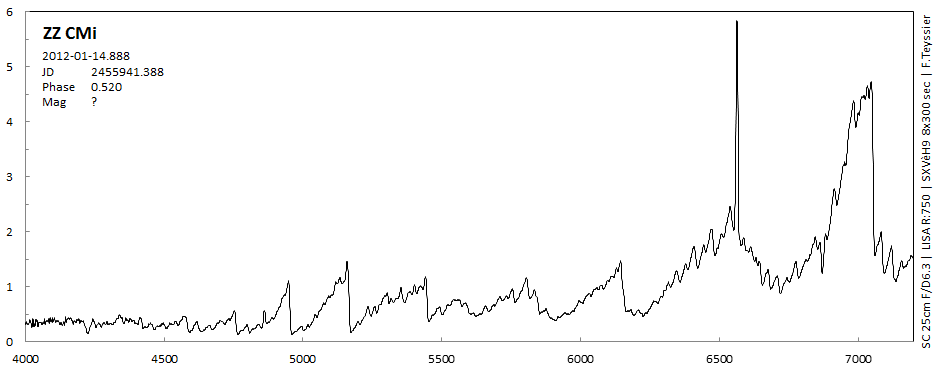 |
|
ZZ CMi * |
| Type |
S |
| Eruptions |
stable |
| Type Géante |
M6 III |
| Mag Range |
9 - 11.5 |
| |
|
Suspected symbiotic star |
 |
|
TX CVn |
| Type |
S |
| Eruptions |
|
| Type Géante |
K5.3 |
| Mag Range |
9 - 10.5 |
| |
|
Low excitation (IPmax = 13.6 eV). Confirmed as a symbiotic by Kenyon (1986). In permanent outburst since 1970's with P-Cygni type spectrum. |
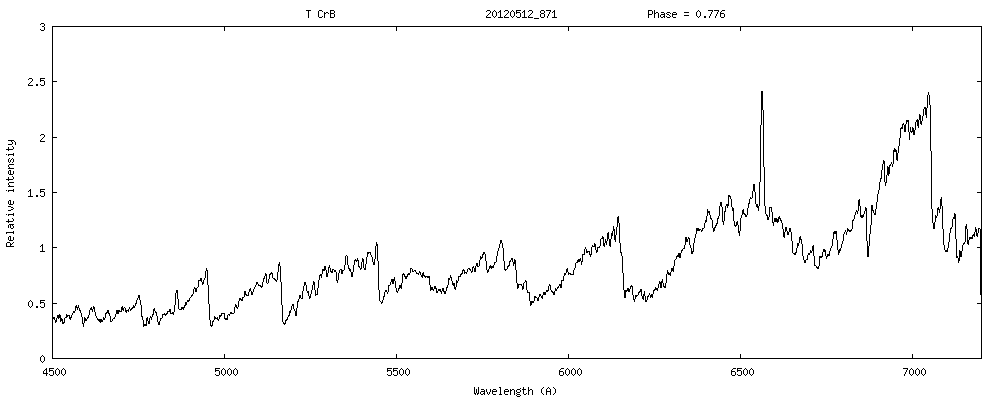 |
|
T CrB |
| Type |
S |
| Eruptions |
Nova récurrente |
| Type Géante |
M4.5 III |
| Mag Range |
9.5 - 1.5 |
| Outburt Mag |
3.5 |
One of the four symbiotic recurrent novae (outburts date : 1866 and 1946) |
| |
|
AG Dra |
 |
|
V934 Her * |
| Type |
|
| Eruptions |
- |
| Type Géante |
|
| |
|
| |
|
Pas de raies d'émission détectées dans le visible. Suspectée comme symbiotique par Garcia & al. (1983) |
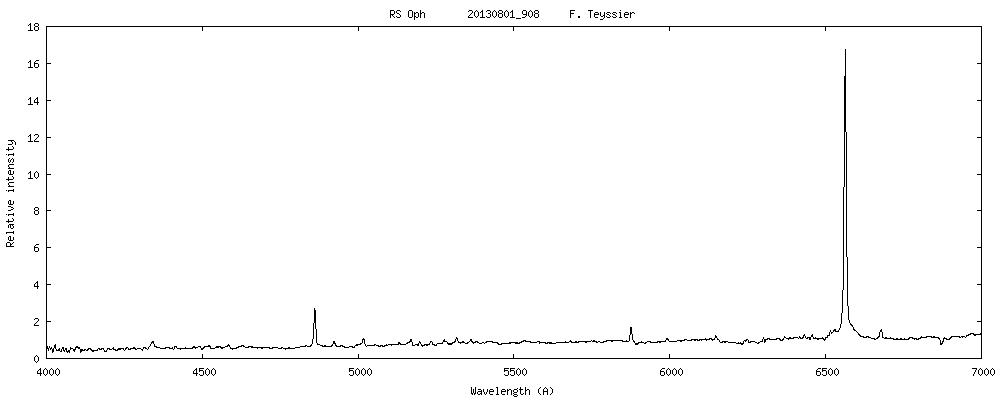 |
|
RS Oph |
| Type |
S |
| Eruptions |
Nova récurrente |
| Type Géante |
K4-M0 I-II |
| Range Mag |
9.5 - 13 |
| Outburst Mag |
5 |
Symbiotic recurrent nova.
~ 6 mag amplitude outburts in 1898 1907 1933 1945 1958 1967 1985 2006
|
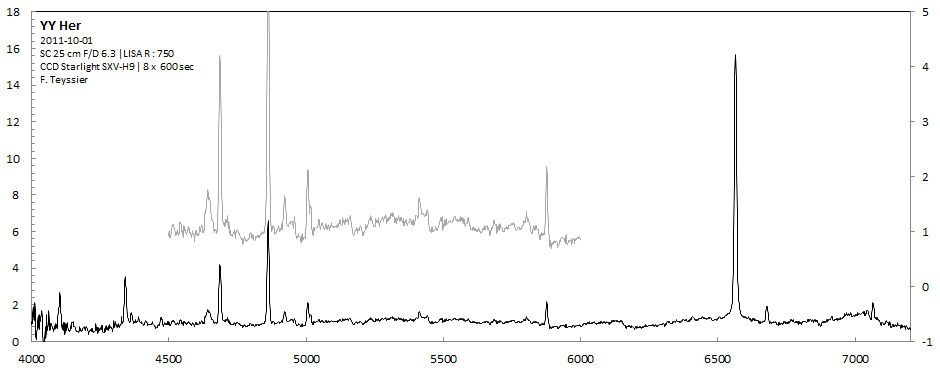 |
|
YY Her |
| Type |
S |
| Eruptions |
Z And |
| Type Géante |
M2 |
| Mag Range |
12 - 13 |
Very similar to CI Cygni, one of the few symbiotics with accretion disk.
|
 |
|
FG Ser |
| Type |
|
| Eruptions |
|
| Type Géante |
|
| Mag Range |
|
| |
|
|
 |
|
StHa 149 |
| Type |
|
| Eruptions |
|
| Type Géante |
|
| Mag Range |
|
| |
|
|
 |
|
V443 Her |
| Type |
S |
| Eruptions |
Stable |
| Type Géante |
M5 III |
| Mag Range |
11.2 - 12. 2 |
| |
|
A rich emission lines spectrum with noticely He I and [OIII] prominent lines. |
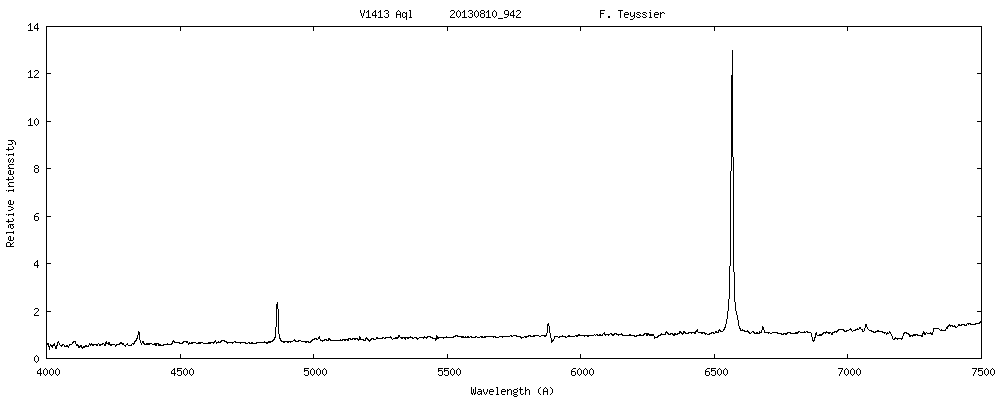 |
|
V1413 Aql |
| Type |
|
| Eruptions |
|
| Type Géante |
|
| Mag Range |
|
| |
|
|
 |
|
BF Cyg |
| Type |
S |
| Eruptions |
|
| Type Géante |
M5 III |
| Mag Range |
9 -13.5 |
| rem : en outburst, spectre ~ F5 |
A fairly weak excitation star, one of the prototype of symbiotics. Note intense Fe II emission lines. |
 |
|
CH Cyg |
| Type |
S |
| Eruptions |
Z And |
| Type Géante |
M6-M7 |
| Mag Range |
5 -11 |
| |
|
A very peculiar symbiotic. CH Cyg was considered as a MK standart for M6 giant type before it began to vary in luminosity and show symbiotic characteristics.One of the rare symbiotics to show evidence for jets.Large luminosity amplitude (from mag 5 in outburt : one of the more luminous symbiotic to mag 11) |
 |
|
HM Sge |
| Type |
|
| Eruptions |
Nova symbiotique |
| Type Géante |
M7 |
| Mag Range |
|
| |
|
|
 |
|
CI Cyg |
| Type |
S |
| Type Eruption |
Z And |
| Type Géante |
M5.5 |
| Mag Range |
11 - 9 |
| |
|
A classical high excitation Symbiotic. Three outburst in the 70' and two between 2009 and 2010. Accretion disk and jets. A rare exclipsing symbiotic.
|
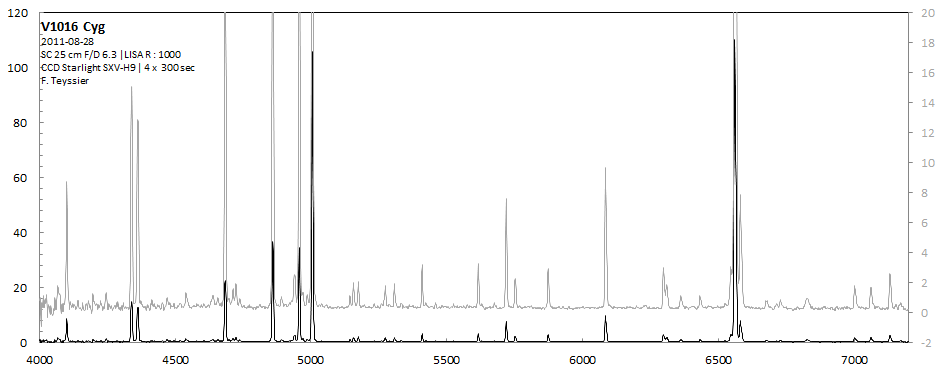 |
|
V1016 Cyg |
| Type |
D |
| Eruptions |
Symbiotic nova |
| Type Géante |
Mira M7 |
| Current Mag |
11.5 |
| Outburts Mag |
10.5 |
On the decline of a long outburst that began in 1964 at mag 15.5 to reach a maximum at 10.5 ~1972). Very spectacular spectrum, closely similar to that of a high excited planetary nebula.
|
 |
|
PU Vul |
| Type |
S |
| Eruptions |
Symbiotic nova |
| Type Géante |
|
| Current mag |
13 |
|
 |
|
ER Del |
| Type |
|
| Eruptions |
|
| Type Géante |
S 5.5 - 2.5 |
| |
|
Sometimes HI emission lines appears in the optical upon the S type spectrum |
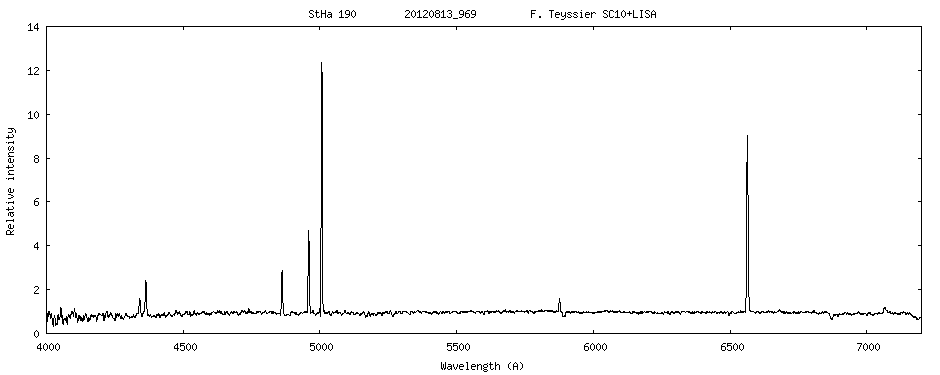 |
|
StHa 190 |
| Type |
|
| Eruptions |
|
| Type Géante |
|
| |
|
| rem |
Yellow symbiotic |
One of the rare yellow symbiotic stars : the giant is a G7III ; recently discovered (1983-1986)
StHa 190 shows highly variable bipolar mass outflow (unusual behaviour in symbiotic stars) with 300 km/s velocity. |
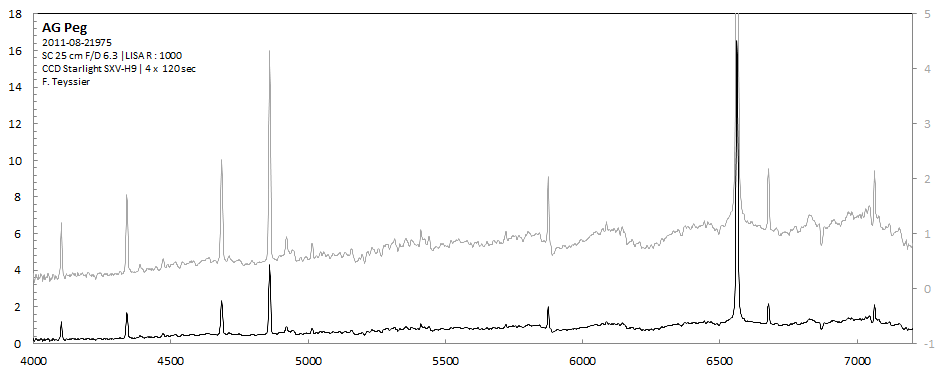 |
|
AG Peg |
| Type |
S |
| Eruptions |
Nova symbiotique |
| Type Géante |
M3III |
| |
|
| Current mag range |
8 - 9 |
L'une des rares novae symbiotiques. Sa lente éruption, a démarré au milieu du XIXème sciècle poura atteindre un maximum vers 1870. Le trés lent déclin est toujours en cours.
The prototype of symbiotic noave. The outburst began in the midth of the XIXth century to reach a maximum near 1870. Very slow decline during about 130 years to the minimum luminosity reached at the end of the XXth century |
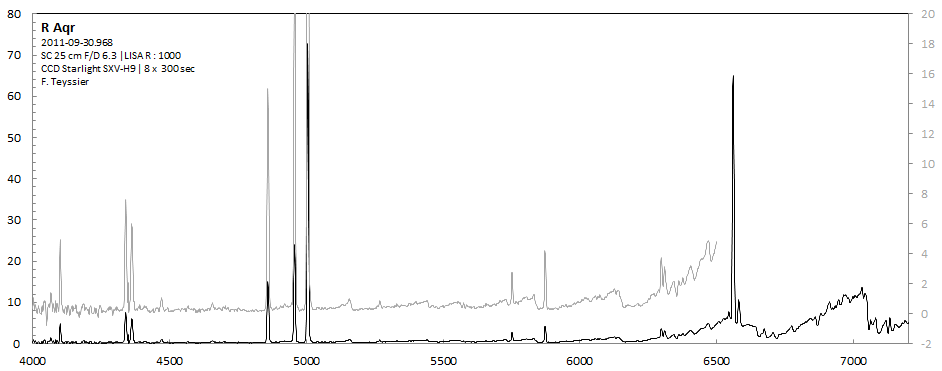 |
|
R Aqr |
| Type |
D |
| Eruptions |
|
| Type Géante |
Mira M7-M8 |
| Mag range |
6 -12 (mira pulse) |
| |
|
Dramatic change in appearance according to the pulsation of the Mira. At minimum luminosity, forbidden lines [OIII] are particularly intense.
Survey during a pulse period is of great interest. |
 |
|
Z And |
| Type |
S |
| Eruptions |
Z And |
| Type Géante |
M2III |
| |
|
The classical symbiotic prototype, whose give its name to that class of stars in the General Catalog of Vraiable Stars. Frequent outbursts. |